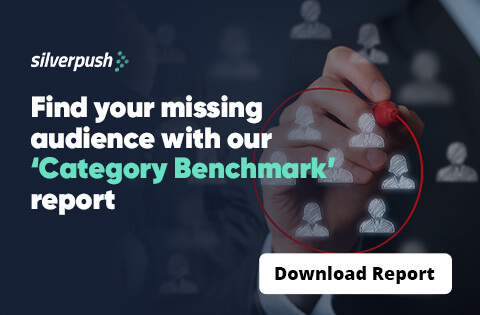Brands’ are wasting $73bn of adspend on unsuitable digital ads during festive period
PUBLISH DATE: 23 November 2023
Over the last two years, global brands have spent over $600 million (£482 million) on ads that are deemed “digitally unsuitable” during the final quarter of the year. Extrapolating this trend to 2023, the anticipated total global ad spend wastage for this year is estimated to reach $73 billion (£59 billion).
A creative technology company’s analysis, which evaluated more than 3.9 million ads from 2021-2022 across 10 different industries, including retail, food and beverage, and consumer packaged goods, revealed that brands globally invested over $600 million in ads not suited for digital platforms during a crucial period for marketers. Projecting this trend to 2023, it is predicted that over $73 billion will be squandered on suboptimal digital ads in Q4.
Earlier research in 2020 and 2021 disclosed that over 50% of digital ad spend supported image and video ads that were not optimized for digital environments ($700 million out of $1.2 million analyzed). In the subsequent year, a similar amount of budget was wasted in Q4 alone.
For many brands, the final quarter contributes to over 50% of their annual revenue and an uneven share of their yearly media budget (around 30% of total worldwide ad spend). This period is a pivotal opportunity for brands to engage consumers, especially with heightened buying intent during Black Friday, Cyber Monday, Christmas, Hanukkah, and Kwanzaa celebrations.
Despite investing millions in bringing holiday campaign ideas to life, brands stumble in the last stretch before their ads reach their digital destination. The routine repurposing of TV-made content on digital platforms means that ads are inadequately adapted to their digital surroundings. They often neglect fundamental fit-for-platform creative best practices crucial for maximizing message impact. Millions are poured into ads lacking branding in the initial 3-5 seconds (the average view length of a digital video), displaying incorrect formats, or lacking subtitles or supers in media environments where over 90% of videos are watched without sound. These are basic creative quality criteria proven to enhance performance on digital platforms.
$5.6 billion of digital ad spend was wasted in 2022: Are you Doing it Right?
PUBLISH DATE: 17 November 2023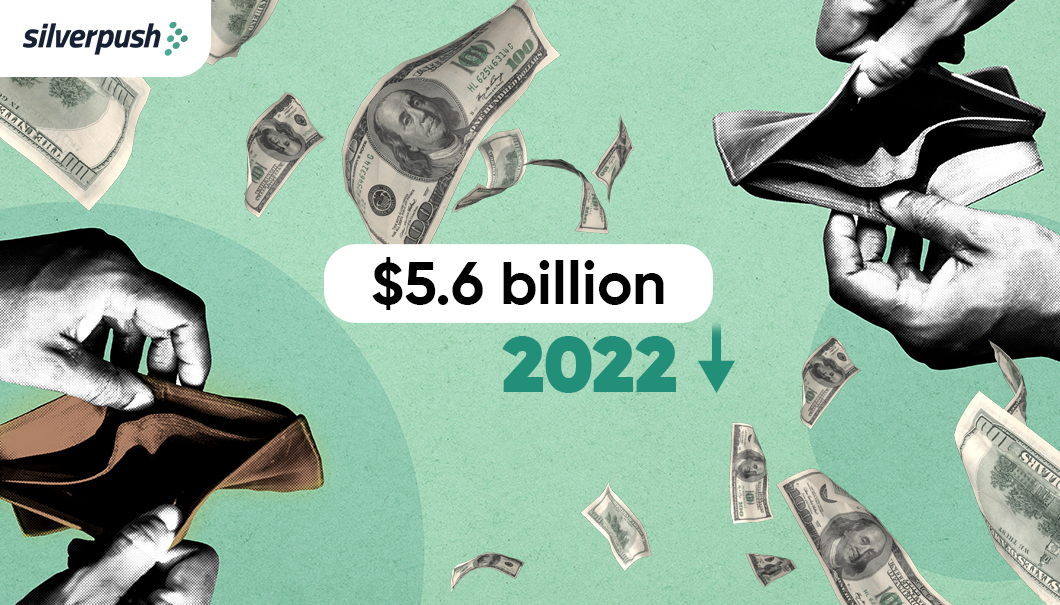
As someone who creates a bunch of ads, both traditional ones and some really out-there experimental ones, you’ve always had this nagging question in your head. It’s like, are your efforts actually hitting the mark, or are they just disappearing into the online void?
According to a report of Digital Media Wastage by Next&Co’s, a staggering $5.6 billion of digital ad spend was wasted in 2022, constituting 41% of the total digital ad spend. Specifically, in the realm of connected TV, LG Ads discovered that brands often allocate 50% of their campaign budget to target just 10% of the available audience.
Against the backdrop of current economic uncertainty, the urgency to address media wastage becomes even more apparent. It is crucial to invest each dollar intelligently, ensuring that it delivers maximum value.
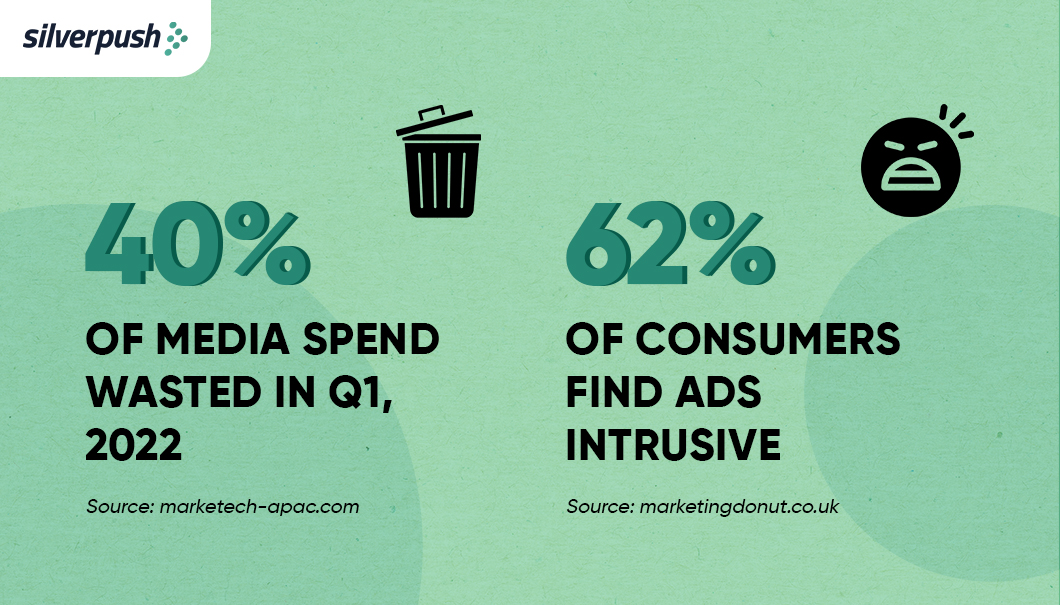
What does “media wastage” actually mean?
To put it simply, media wastage means utilizing your marketing budget to reach consumers who aren’t your intended audience. It’s like buying winter coats for people living in a tropical climate – not the most efficient use of your resources, right? Media wastage can mess up any digital campaign, whether it’s a pay-per-click or a video ad, so everyone needs to watch out for it.
And it’s not just about the money. Ads placed alongside misaligned content can actually make consumers less likely to buy, whereas matching ads with the right context can boost the likelihood of purchase by 8%.
Now, I can almost hear you asking: “If my ad ends up reaching folks who aren’t really interested in my product, how much damage could it really do?” In the world of marketing, every cent matters. Especially, when we are talking about billions of dollars going down the drain every year, it’s not just a small problem. It’s like a big wave that’s sweeping away potential returns – your potential returns.
How to Maximize Impact and Reduce Media Wastage from your Advertising Campaigns?
It’s not only about showcasing your creative skills or staying in sync with the newest trends; it’s also about effectively managing your resources. As mentioned earlier, every dollar wasted in media inefficiency could have been used for a more targeted and influential campaign. That money could have gone into improving your product or elevating the overall customer experience.
Beyond One Size Fits All: Mastering Audience Reach with Custom Creatives
Effectively connecting with audiences through personalized creative content is crucial. According to a study by Barraza, contextually aligned ads were 93 percent more memorable than misaligned ads. Thus, it clearly depicts that aligning ads with congruent content, rather than simply placing ads where there are larger audiences, ensures a higher return on investment.
By utilizing top-notch brand suitability and contextual targeting technologies like Silverpush, brands and advertisers can be confident that their purchased impressions match with the most fitting content. This strategic approach ensures that every dollar spent yields the maximum number of positive impressions through brand suitability and contextual targeting.
It’s essential for brands to recognize that the era of niche targeting is here. Campaigns now focus on delivering custom-made creativity to smaller, niche audiences through brand suitability, contextual targeting, and inclusion lists. Audiences respond more positively to advertising content that resonates with their interests, while a broad approach only results in wasteful spending.
Inclusive Precision: The Path to Sustainable Advertising and Waste Reduction
In an era of careful advertising, some brands and advertisers have avoided addressing crucial topics such as race, gender, and religion by using block lists. Unfortunately, this approach also results in creators focusing on these issues, mainly from diverse communities, being blocked, leading to the exclusion of their content from reaching diverse audiences.
The significance of diverse audiences cannot be overstated. Overly cautious block lists have, for too long, prevented these potential audiences from engaging with brands’ content. According to a new survey from Top Design Firms, nearly two-thirds of consumers (64%) are at least somewhat likely to purchase a product immediately after seeing it advertised if the brand embodies diversity and inclusion.
Developing customized and well-researched inclusion lists enables brands and advertisers to support diverse creators and audiences. Investing in diverse audiences through inclusion lists not only aligns with the principles of inclusion and diversity but also proves financially beneficial by reducing media wastage.
Aligning Your Message with Consumer Preferences
While progress has been made in addressing underrepresentation in video advertising content, the issue of media wastage extends beyond mere representation. It’s time for brands and advertisers to adopt diverse and conscious strategies in every aspect of their campaigns, from building and ideation to targeting and brand suitability methodologies.
For multicultural marketers, being able to rely on high quality ad tech that can help you identify and target your chosen audience is a must. This means looking for partners that not only have firsthand experience and expertise working with the audiences you’re trying to attract but also have a sophisticated platform that will enable you to reach them at scale.
Mirrors’s cutting-edge AI-powered technology uses a combination of contextual signals to reach your most relevant consumers at the right moment/context. The cutting-edge visual intelligence identify multicultural triggers that can work wonders for your ad campaign:
Faces of micro-influencers – Due to their ability to connect with niche communities and engage with their followers on a more personal level, brands can leverage Mirrors hyper contextual targeting solution to identify key contexts like celebrities of micro-influencers for a high level of engagement.
Logos of minority communities-owned brands – By identifying key contexts like brands of minority community-owned brands, channels & other relatives in your advertising demonstrate a commitment to representation and inclusivity. It sends a strong message that your brand supports and values diversity, which can resonate positively with multicultural audiences.
Language – Recognizing the linguistic diversity within multicultural communities is important and audiences seek out brands that localize their content to give it a more personal touch. Language-specific advertising demonstrates respect for cultural diversity and enhances the overall impact of the campaign.
Regional channels – Regional channels often create content that is specific to the local culture, language, and interests of their audience. By advertising on these channels, brands can align their messaging with the cultural context and create content that resonates with the viewers. This relevance enhances the effectiveness of the advertising campaign and fosters a stronger connection with the target multicultural audience.
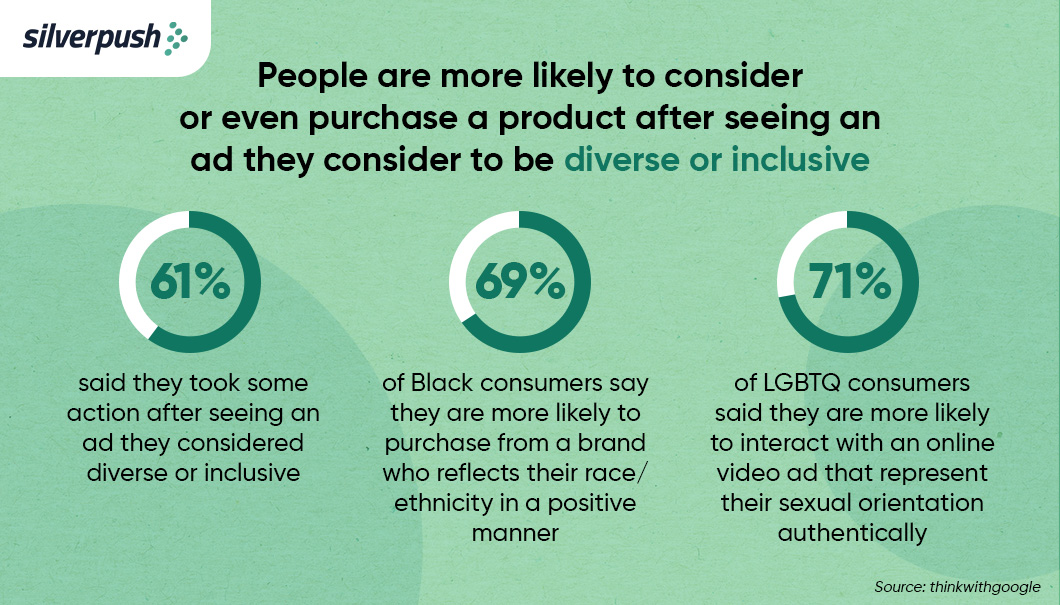
These considerations go beyond words and contribute to the impactful social messages brands convey, all while maximizing the ROI for campaigns.
Media wastage is a widespread industry challenge, but addressing it requires a reassessment of advertising practices. An essential step is ensuring a brand’s content resonates with the correct audiences through high-standard brand suitability and contextual advertising. Brands and advertisers should break free from the constraints of cautious advertising by embracing more rewarding inclusion lists. Taking a conscious and holistic approach to advertising is crucial for reducing media wastage and fostering a positive advertising ecosystem for everyone involved.
Want to cut down on media waste and boost your ad campaigns’ ROI? Reach out to us to get started!
Trick or Treat? Reach Your Audience with Spooktacular Ad Campaigns!
PUBLISH DATE: 10 October 2023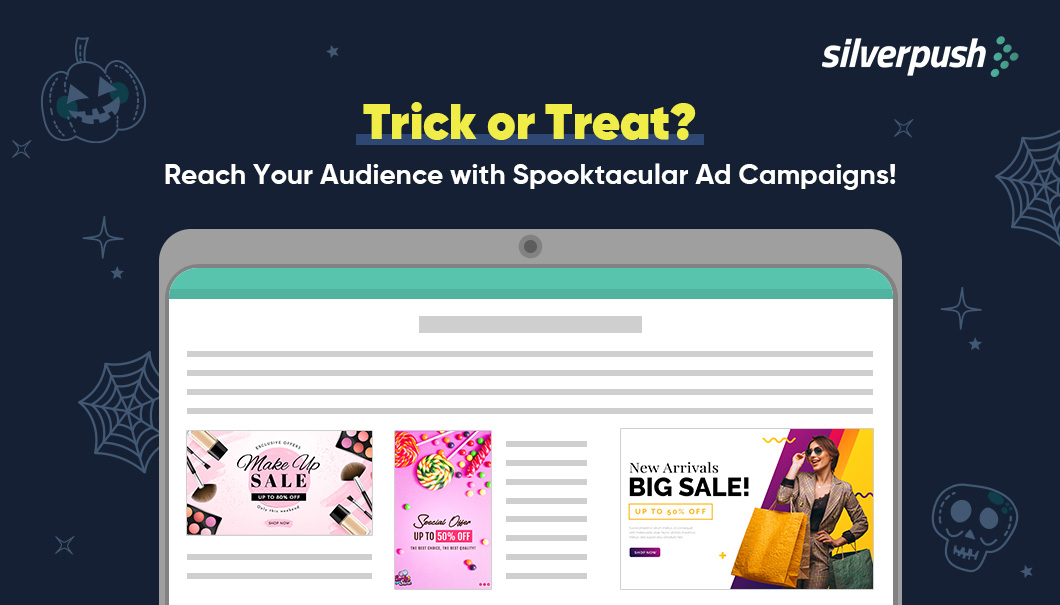
“A successful marketing campaign is like a well-carved pumpkin – it leaves a lasting impression.”
Every brand and advertiser aims to craft a compelling narrative that deeply connects with their audience, and leaves a lasting impression. Halloween season offers a unique opportunity to connect with your audience through spooktacular Halloween ad campaigns that capture the spirit of the holiday.
But before we delve into how to seize the opportunity let’s focus on….
Why Advertisers Should Ace Their Halloween Campaigns?
Halloween isn’t confined to any particular region anymore. It’s a global celebration, making it the perfect stage for brands to embrace cross-cultural marketing or launch multicultural campaigns. Did you know, in Japan, approximately 20-30 million people celebrate Halloween each year whereas, in the Philippines, 90% of people know and celebrate the spooky festival.
Moreover, Halloween spending is on a thrilling trajectory, set to hit a spine-tingling $12.2 billion this year, surpassing the 2022 figures by $1.6 billion.
Where the audience is spending the most?
The big bucks are flowing into candy (96%), decorations (77%), costumes (69%), and even greeting cards (35%). And where are folks flocking to get their Halloween fix?
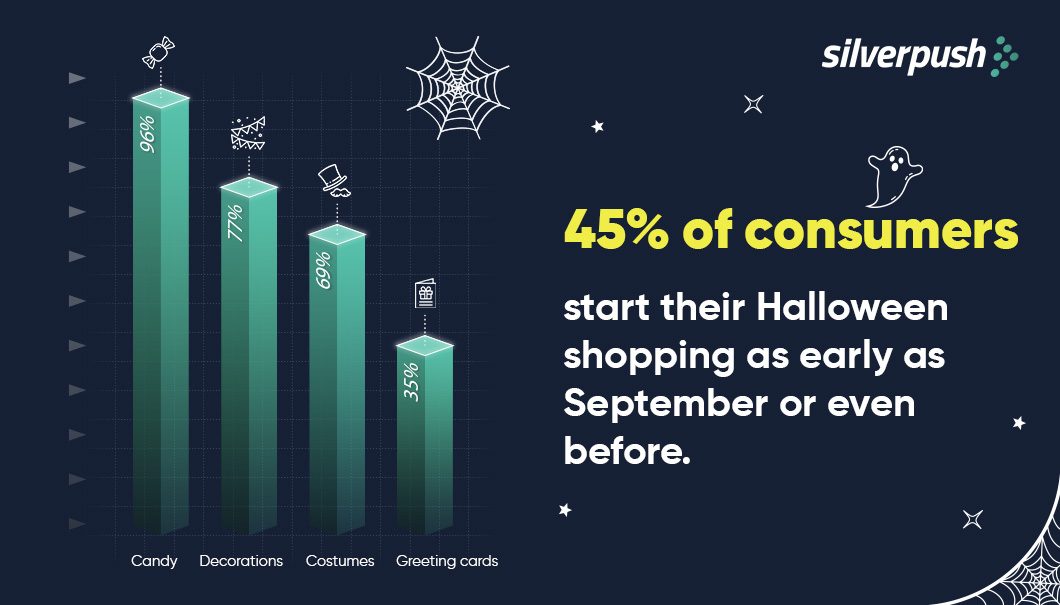 Candy (96%), Decorations (77%), Costumes (69%), and even Greeting cards (35%). 45% of consumers start their Halloween shopping as early as September or even before. Additionally, a significant 22% of consumers believe that retailers can begin showcasing and selling Halloween products.
Candy (96%), Decorations (77%), Costumes (69%), and even Greeting cards (35%). 45% of consumers start their Halloween shopping as early as September or even before. Additionally, a significant 22% of consumers believe that retailers can begin showcasing and selling Halloween products.
Halloween presents a lucrative chance for brands to engage with their audience extensively, as a substantial 45% of consumers start their Halloween shopping as early as September or even before. Additionally, a significant 22% of consumers believe that retailers can begin showcasing and selling Halloween products, both online and in physical stores, without any concerns about it being too early.
Well, the numbers speak volumes, but they don’t tell you how to reach your audience effectively. (But we do!)
How to Cast a Spell of Engagement This Halloween Season?
What humans see tends to linger in their memory, but the modern average user is constantly bombarded by ads throughout the day. In fact, they may encounter anywhere from 4,000 to 10,000 ads daily, yet only notice a fraction of them—less than a hundred, to be precise.
So, how can your message stand out in this advertising onslaught? The answer is surprisingly simple: harness the power of video ads and ensure they are contextually relevant to the moment.

Since we have gained the foundation understanding about the significance of video ads we must look into how to make these holiday season video ad campaigns effective.
1. Be Relevant
Approximately 79% of consumers are comfortable with ads that are relevant to the topics they are currently engaged with.
With the decline of third-party cookies, advertisers are shifting their focus to contextual targeting. This approach results in a 30% higher conversion rate compared to non-contextual ads.
Reaching the right audience at the right time not only fosters positive brand recognition but also boosts engagement.
2. Omnichannel Presence
Brands must follow the mantra of “Reach your audience where they are.” This means having an omnichannel presence to connect with audiences across various platforms where they leave their digital footprints.
An integrated brand presence across multiple marketing channels enhances brand awareness and facilitates easier audience connection.
Silverpush’s Mirrors offers a solution to reach the right audience on platforms like Open Web, Meta, and YouTube. It employs AI-driven context identification technology, ensuring precise audience targeting, even in a cookieless tracking environment.
The human-augmented technology offers contextual advertising across platforms while maintaining strict brand safety guidelines.
3. Dynamic Video Optimization
Today the attention span of the audience is similar to a toddler. But with dynamic interactive videos advertisers can engage the audience for a longer span of time.
Studies show that brands can increase consumer engagement up to 3X with 15-second interactive ads.
Crafters is a flagship product by Silverpush that harnesses real-time data and user insights to revolutionize ad campaigns.
Advertisers can deliver highly personalized and relevant ad experiences to their audience through precise targeting and endless customization opportunities.
Conclusion
Holiday season ads are best to captivate the audience but to achieve the goal advertisers must adopt the best option. With the demise of third-party cookies, contextual advertising has taken center stage. So to stand out front of the competition advertisers must opt for contextual targeting while adding the layer of interaction to make their ad campaign as spooktacular as their celebrations.




